
Why You Should Pursue a Cybersecurity Career
As job security in many fields becomes increasingly suspect, students and seasoned workers seek sustainable career opportunities. The IT sector




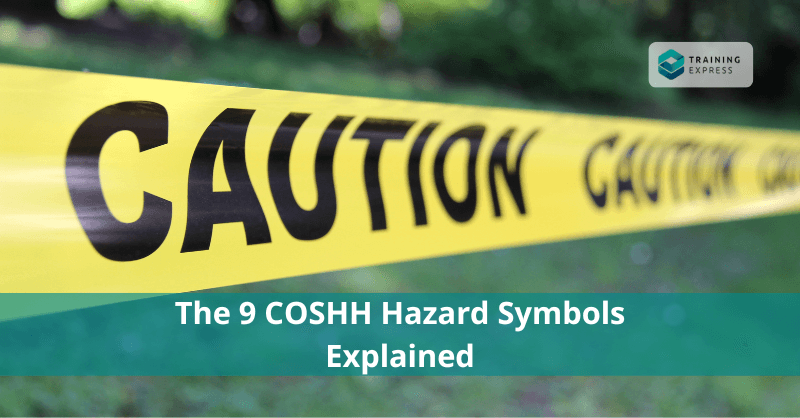
When you cross through a street and notice some exclamatory sign inside a triangle or maybe a skull with cross-bones, you might wonder what they refer to and the meaning behind each warning label and symbol. These are known as COSHH hazard symbols, and each possesses a significant sense to indicate the danger and threat the substances or that place may cause.
So, a question is frequently asked, “What does COSHH mean?” And for this, we have come up with an article explaining the meaning of COSHH and the nine hazard symbols. So, let’s dig deeper and dive into the nine hazard symbols and what each of them means.
COSHH, which is the abbreviation of Control of Substances Hazardous to Health, was first introduced in 1988. According to the Health and Safety Executive (HSE), it is a set of laws and regulations developed for businesses to ensure the safety of workers from hazardous substances. It is an essential feature used to identify dangerous substances categorised into three parts
In 1992, the UN introduced this framework. It ensured the labelling of these symbols in the packaging to limit exposure to dangerous substances to meet the internationally agreed criteria.
Before introducing yourself to the nine symbols, you must know what hazard symbols mean. Hazard symbols are easy-to-understand and recognisable pictograms that indicate the level of threat. Also, it could be the level of toxicity or danger of those particular substances. Understanding the hazard symbol is essential. That’s because it allows you to minimise the risks associated with those substances for your employees to build a secure workplace.
For example, when you notice a fire icon on your favourite hairdressing spray or body spray, you will automatically understand that it has a chance to explode in the heat. That is why it’s always recommended to keep them in a cool place. And that icon is known as a hazard symbol.
When you notice a hazardous symbol, you are immediately aware of the danger and remain cautious. That is the power of hazard symbols. Visual representation is much more attractive and noticeable than reading the exact directions. If you are visiting another country and don’t know its language, these hazard symbols will enlighten you with its directives.
Hazard symbols are essential, especially when working in an organisation that deals with various chemicals and harmful materials. By displaying a list of these symbols, you can ensure everyone will be well aware of the dangers. And it will help prevent any injury or accident in the workstation.
Now, let’s talk about the 9 COSHH hazard symbols, their meaning and what they look like.
Previously, COSHH hazard symbols were an illustration of the specific danger in black colour inside an orange box.
But since 2017, hazard symbols have been changed to a white background with a red outlined diamond shape. Inside is the black illustration (as seen in the picture) for easier identification of hazardous substances and global use. These are developed and known as CLP legislation.
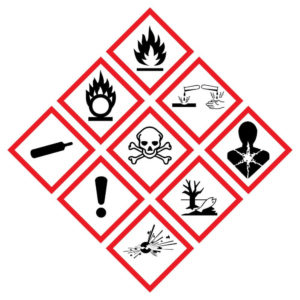
Each of the nine symbols is explained with their meaning in the following section with their pictograms.
The explosive symbol of COSHH is an illustration of an exploding bomb.
If this symbol is labelled under a substance, it means that the substance will catch severe fire and release heat, pressure, or gas. There’s a possibility of explosion in case of an increase in temperature, tremendous pressure or sudden shock.
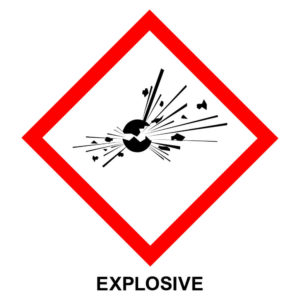
The flammable substances are symbolised with a sketch of a flame inside the red-outlined diamond.
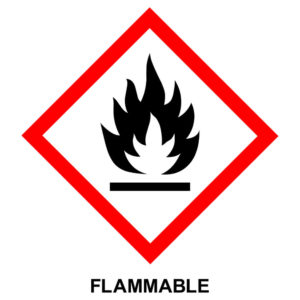
Flammable substances can be solids, liquids or gases. But regardless, it is their vapour that causes fire or explosion when exposed to any source of ignition. Though they are used practically in many different places, they are safely handled, stored correctly, and kept in the lowest quantity possible. Products like paints, polishes, cleansers, waxes etc., are highly flammable.
The symbol of oxidising substance is represented as a flame over a circle and a line under that circle. The circle here is used to symbolise oxygen(O).
Oxidising substances are dangerous because when they react with other chemicals, they cause fire or explosion. Oxidisers remain present, especially in bleaches and other related chemicals, and they form an exothermic reaction that results in ignition and lets the fire burn longer and hotter.
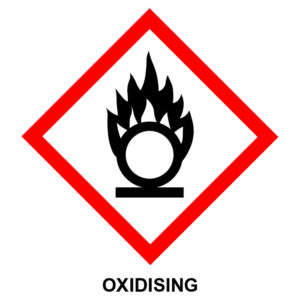
In places where bleaches are regularly used, such as salons and cleaning services, you should be careful and ensure that proper precautions are met. This “oxidising” COSHH symbol is also labelled on oxygen cylinders for clinics, hospitals, and care units.
The symbol “gas under pressure” is an illustration of a gas cylinder.
This symbol is used when a container bears compressed, liquified, refrigerated liquified or dissolved gases. And it is hazardous if it is heated or under tremendous pressure. The adverse results in an explosion, which can be a serious threat.
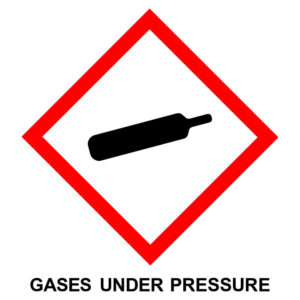
Moreover, compressed refrigerated gases can cause serious cryogenic burns on the skin. This hazard symbol is mostly found on gas cylinders and containers.
The “corrosive” symbol is displayed as a sketch of a hand and a black rectangle being disintegrated when coming in contact with substances from two test tubes.
This corrosive symbol is dangerous for health, even to the external body, because it takes part in corroding the living tissue. The corrosive substances penetrate tissues and even cause harm to the skin and eyes by direct contact. They can be in any form, such as solids, liquids, gases, or even mists.
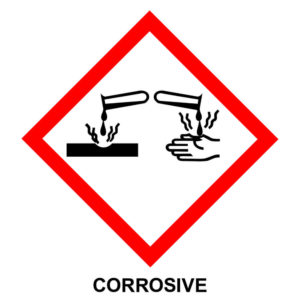
And they can cause metal corrosion as well when they come in contact with one another. If in vapour form, corrosive materials can cause serious harm to the respiratory tract and lungs when inhaled. Corrosive substances are mercury, acrylates, etc., and can also be found in pharmaceutical goods like nicotine and steroids.
The symbol that you see in an illustration of a skull and cross-bones is used to denote that the substance is toxic.
Toxic substances are disastrous to health when they are touched, inhaled, or swallowed. Consequences can also be fatal. Only a minimum of exposure can cause acute damage to the health, and immediate action should be taken before the situation worsens.
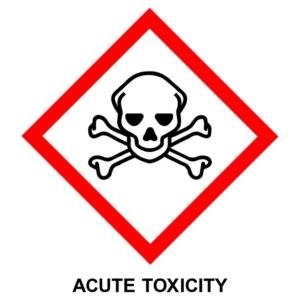
The substances are labelled with the “toxic” COSHH symbol and sometimes can be replaced by safer options. Substances such as ammonia, acids, and cleaning items are toxic and should be handled with the right care, or they can be deadly.
The substances that are dangerous to health, causing skin and eye irritation, inflammation or dermatitis, are placed under the “health hazard” COSHH symbol, denoted by an exclamatory sign.
Hazardous substances can cause dizziness, drowsiness and respiratory problems as well if inhaled or swallowed. They can also cause allergic reactions in many people. The “Health hazard” symbol is included in the packaging of detergents, cleansers, bleaches, chlorine, and ammonia.
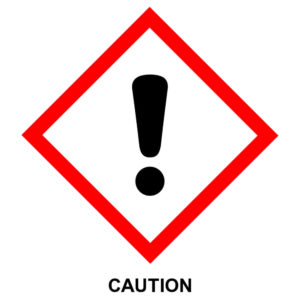
It helps to avoid any dangerous mishaps while working with them. Substances under this category can cause adverse effects on health if it damages the ozone layer of the earth.
The denotation of “serious health hazard” is an illustration of a person with six-pointed stars over the chest.
This COSHH symbol, as the picture talks, is disastrous to health, causing long-term health deterioration and breathing problems. The substances can be as dangerous as fatal and can cause genetic and infertility disorders.
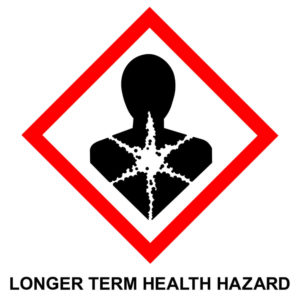
Besides, when ingested or inhaled, the substances can play a long-term adverse role in causing respiratory illness, allergies and cancer.
For example, carcinogens that cause cancer are found in diesel exhaust fumes or benzene found in paint and rubber. Arsenic is another example of a “serious health hazard” substance that is used in pesticides and car batteries. And it is claimed to have the potential to alter human DNA!
The “dangerous for the environment” COSHH symbol is denoted as one dying fish and a dead tree in a landscape.
Environmental hazardous materials are substances that cause a chronic and acute threat to the environment. Petrol, pesticides, turpentine, and other chemicals are some examples of environmentally hazardous substances.
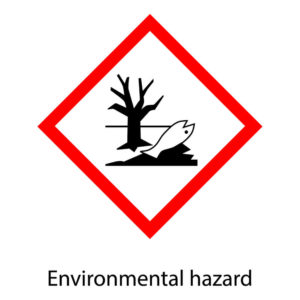
If these are mistakenly drained into the water, it is a serious threat to aquatic life. These substances cause immediate or long-term consequences for the environment.
If you have come this far in this blog, you might now understand why hazard symbols are so important. So now, let’s discuss the need to use these hazard symbols. Usually, hazard symbols help to identify the type of substances, be it any of the nine symbols.
Once you learn the symbols, it is easy to determine the substance and associated risks that come with it.
For instance, if a container has a label “explosive” hazard symbol on top of it, you will find it easier to identify the substance inside it and will warn others to avoid storing the container where there is a possibility of high temperature or pressure. A similar case goes with other symbols. So, even if the language is unknown, people can easily understand the picture and remain cautious by seeing the symbol.
You can be cautious about the substances, whether they are a threat to the health or a booster of environmental pollution.
The main difference between each of the COSHH symbols is that the substances are different, each carrying a unique feature of the dangers associated with it. COSHH symbols differ with respect to the specific dangers of that specific substance.
If you know by now what each of these symbols denotes, you can easily differentiate between them because each of them has different illustrations resembling the hazard. For example, let’s assume the hazard symbol is dangerous for the environment. You can now tell that this symbol is not for dynamites or bleaches that cause fire or explosion but rather a threat to the environment!
Any substances that are hazardous and can cause harm to the health and environment are covered under COSHH. Under the Control of Substances Hazardous to Health (COSHH), the following substances are identified as hazardous –
** Substances that do not fall under COSHH regulations are lead, asbestos, and radioactive substances.**
These fall under different categories of their own specific laws and regulations.
Is knowing COSHH symbols essential? Of course, it is! Especially for those employees working with the substances. Recent studies by the Health and Safety Executive (HSE) show that more than 13,000 people suffer from respiratory illness because of breathing and lung problems. According to the International Labour Organisation, over 651,271 people die each year due to a lack of awareness of COSHH and poor working conditions.
It is the duty of the employers who are responsible for the announcement of COSHH hazard symbols of each of the employers to be cautious while working with these dangerous materials. The presence of proper safety equipment, such as gloves, masks, safety glasses, PPE, etc., is an integral part when coming in contact with harmful chemicals or things such as compressed gas cylinders.
By knowing the meaning of each COSHH hazard symbol, you will know which action to take when and what precautions you must follow for that specific substance. That way, you are maintaining proper workplace safety and returning your favour to nature in many ways by keeping the environment clean.
Globally Harmonised System of Classification and Labelling of Chemicals, or shortly GHS. It was developed by a team of international hazard experts from the United Nations. And it aims to develop a single globally recognised system to address the classification of chemicals and hazard communications through labels and safety data sheets.
With a global level of trade comes in need to ensure that the products bearing the chemical hazards are communicated regardless of where those products in the world are put to use. The national laws and regulations relating to chemicals might seem similar.
But they are often different enough that they require multiple sets of labels, safety data sheets, and other information when traded internationally. Thus, GHS was introduced to eliminate all this confusion, which could have disastrous consequences when dealing with hazardous substances.
GHS needs to be identified globally. People of all ages, children, the elderly, and even the illiterate should know the dangers of hazardous substances for safe handling, transporting, and storing. GHS was officially introduced in 2003. And the latest edition of GHS was introduced in 2021 and published by the United Nations Economic Commission for Europe (UNECE).
Knowing about the nine COSHH symbols is critical especially if you or your employees work with these hazardous substances. For example, acids, disinfectants, mercury, and many others. This will help your employees be aware of the relevant dangers and keep themselves safe.
Sound knowledge of COSHH will make your workers aware of the harmful substances and prevent further incidents in the workplace. That’s why COSHH (Control of Substances Hazardous to Health) Training is essential for employers and employees. Be aware and help others remain safe!

As job security in many fields becomes increasingly suspect, students and seasoned workers seek sustainable career opportunities. The IT sector

Children aged three, four, and five benefit from early childhood education.. They all have the same objective, which is to

Sports are exhilarating and exciting, but the thrill comes with a risk – injuries. From the tackles and cramps in

How to grow Popularity with your target audience Whether you are sharing pictures of your adorable pet or are advertising

As technology advances, smartphones become more functional. Today, they can be used for photography along with digital cameras. Moreover, you

In today’s highly competitive market, businesses strive to achieve the best return on investment (ROI) from advertising spend. With budgets
No more than 50 active courses at any one time. Membership renews after 12 months. Cancel anytime from your account. Certain courses are not included. Can't be used in conjunction with any other offer.

